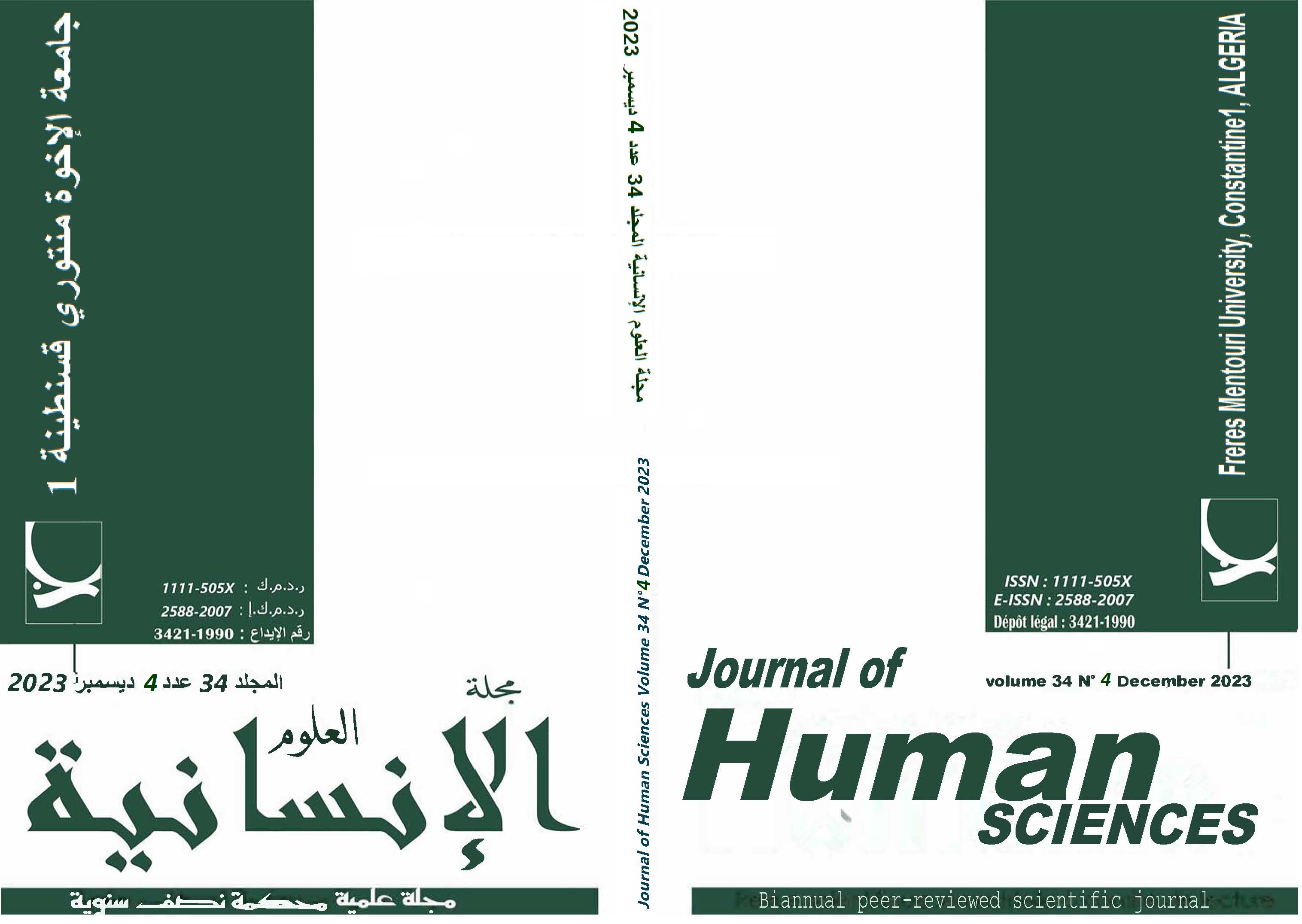Adjusting EFL Learners’ Attitudes towards Writing
Keywords:
Learners’ attitudes, writing, innovative activitiesAbstract
Foreign language writing is unquestionably an intricate process, and many EFL learners may consequently develop an aversion to the writing skill. This paper aims at positively changing EFL learners’ attitudes towards the craft of writing through a series of innovative writing activities designed by the researcher. To attain this objective, a group of EFL students have received a six-month writing training in a writing centre at the American Corner, University of Constantine. The obtained results showed that exposing students to certain type of creative writing activities and tasks can successfully change the way they perceive writing, and thus began to improve their skills accordingly.
Downloads
References
- Baker, C. (1992). Attitudes and language. Clevedon, UK: Multilingual Matters.
- Bartram, B. (2018). Attitudes to modern foreign language learning:
- Colman, A. (2016). What is psychology? Routledge.
- Erwin, P. (2011). Attitudes & persuasion. Psychology Press.
- Garrett, P. (2010). Attitudes to language. Cambridge University Press.
- Hashemian M., Heidari A. (2013). The relationship between L2 learners’ motivation/attitude and success in L2 writing. Procedia-Social and Behavioral Sciences, 70, 476-489.
- Heinzmann, S. (2013). Young language learner’s motivation and attitudes. Bloomsbury Publishing.
- Komba, S.C., Kafanabo, E.J., Njabili, A.F. and Kira, E.S. (2012), “Comparison between students’ academic performance and their abilities in written English language skills: A Tanzanian perspective”, International Journal of Development and Sustainability, Vol. 1 No. 2, pp. 305–325.
- Kroll, B. (2003). Exploring the dynamics of second language writing. Cambridge University Press.
- Maio, G. & Haddock, G. (2015). The Psychology of attitudes and attitude change. Sage Publications.
- Manchón, R. (2011). Learning to write and writing to learn in an additional language. John Benjamins Publishing Company.
- Olson, J.M., & Maio, G. (2003). Attitudes in social behaviour. In T. Million & M. Cerneer (Eds.), Handbook of Psychology: Personality and Social Psychology (Vol.5, PP.229-325). New York: Wiley.
- Petric, B. (2002). Students’ attitudes towards writing and the development of academic writing skills. The Writing Center Journal, 22 (2). pp. 9-27.
- Rumsey, N. & Harcourt, D. (2005). The psychology of appearance. Open University Press.
- Vogel, P. & Wänke, M. (2016). Attitudes and attitude change. Routledge.
- Zimbardo, P. G., & Leippe, M. R. (1991). The psychology of attitude change and social influence. Mcgraw-Hill Book Company.
- Crano, W & Prisilin R. (2008). Attitudes and attitude change. Psychology Press.
- Dörnyei, Z. (2014). Motivational strategies in the language classroom. Cambridge University Press
- Eagly, A. H., & Chaiken, S. (1993). The psychology of attitudes. Brace Jovanovich College Publishers.
- Fiske, S. et al (2010) (Eds.), Handbook of social psychology (pp. 353–393). John Wiley & Sons, Inc.
-Gillham, B. (2008). Developing a questionnaire (2nd Ed.). Continuum.
-Hamblen, B. (2012). Emotional fitness: A counselor's perspectives. Inspiring Voices Publishing.
-Hogg, M., & Vaughan, G. (2005). Social psychology (4th edition).Prentice-Hall.
Insights from comparative education. Bloomsbury Publishing.
- Katz D. (1960). The functional approach to the study of attitudes. Public Opinion Quarterly, 24, 163–204.
-Mackey, A. & Gass, S. (2012). Second language research: Methodology and design.3rd Ed. Routledge.
- Petty, R. E., Wheeler, S. C., & Tormala, Z. L. (2003). Persuasion and attitude change. In T. Millon & M. Lerner (Eds.), Handbook of psychology: Personality and social psychology (pp. 353-382). Wiley.
-Sutton, R. & Douglas, K. (2013). Social psychology. Palgrave MacMillan.
-Whitley, B. E., Jr., & Kite, M. E. (2012).Principles of research in behavioral science (3rd Ed.). Routledge.
Downloads
Published
How to Cite
Issue
Section
License
Copyright (c) 2023 Journal of Human Sciences

This work is licensed under a Creative Commons Attribution-NonCommercial 4.0 International License.

















